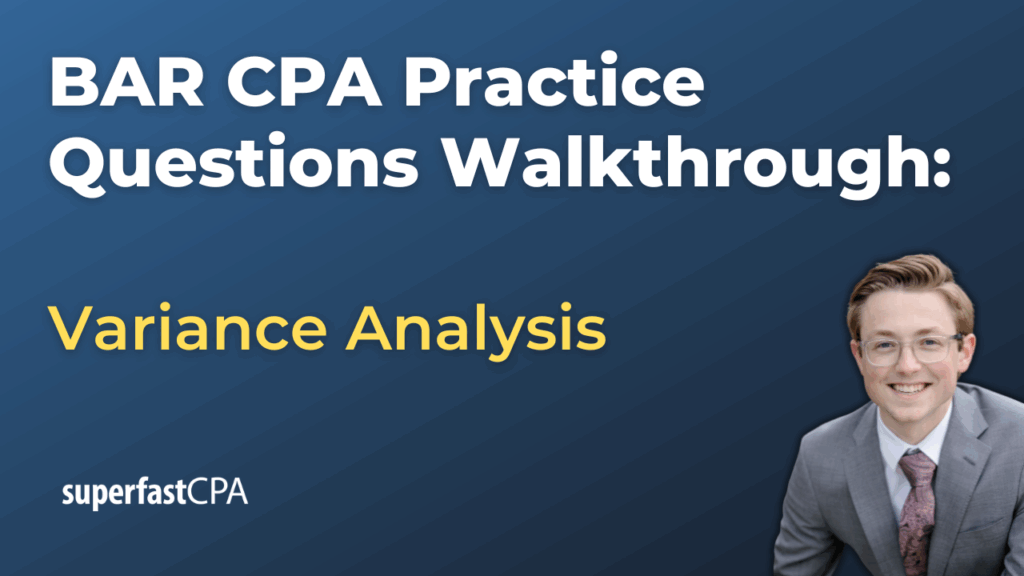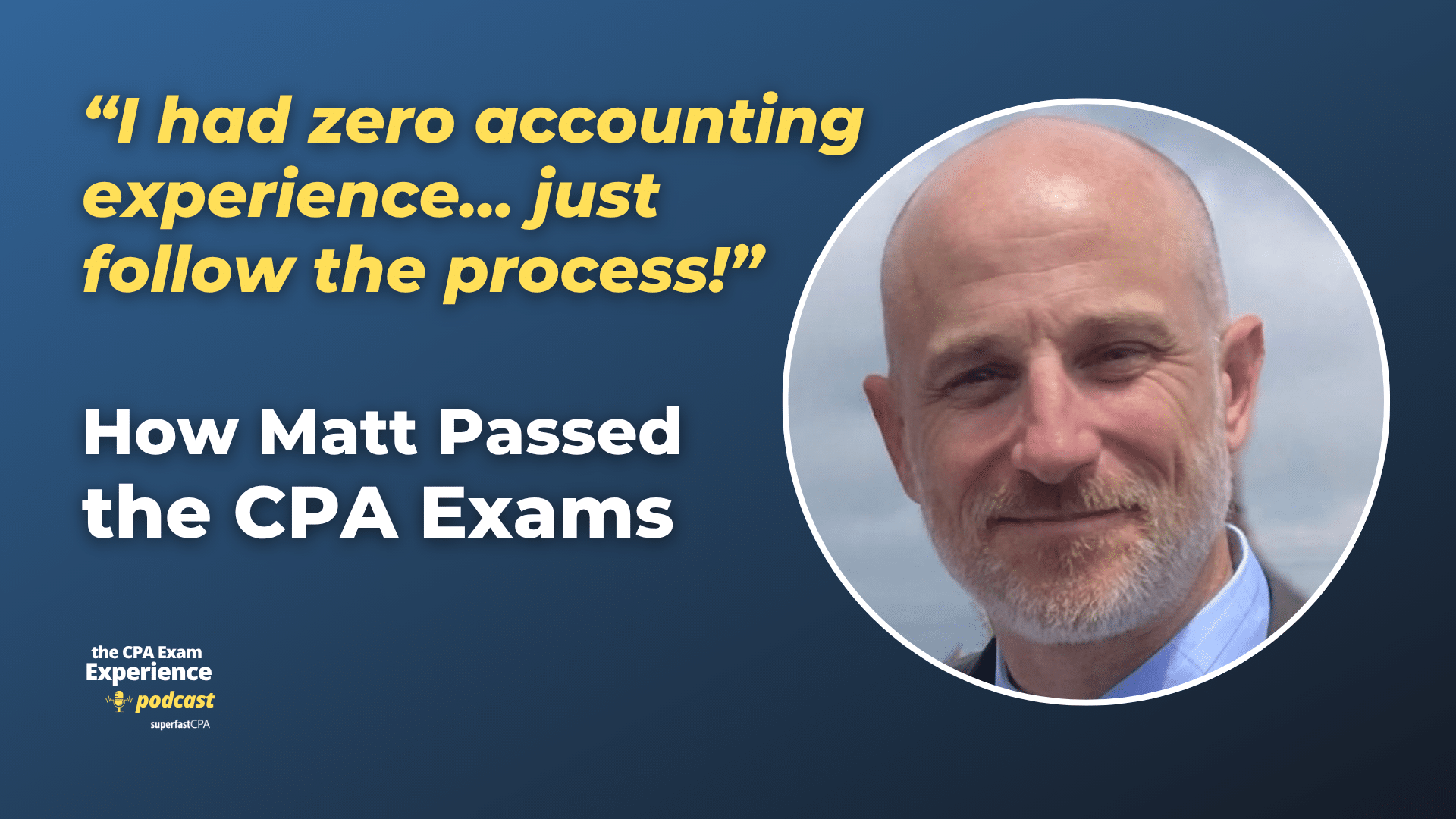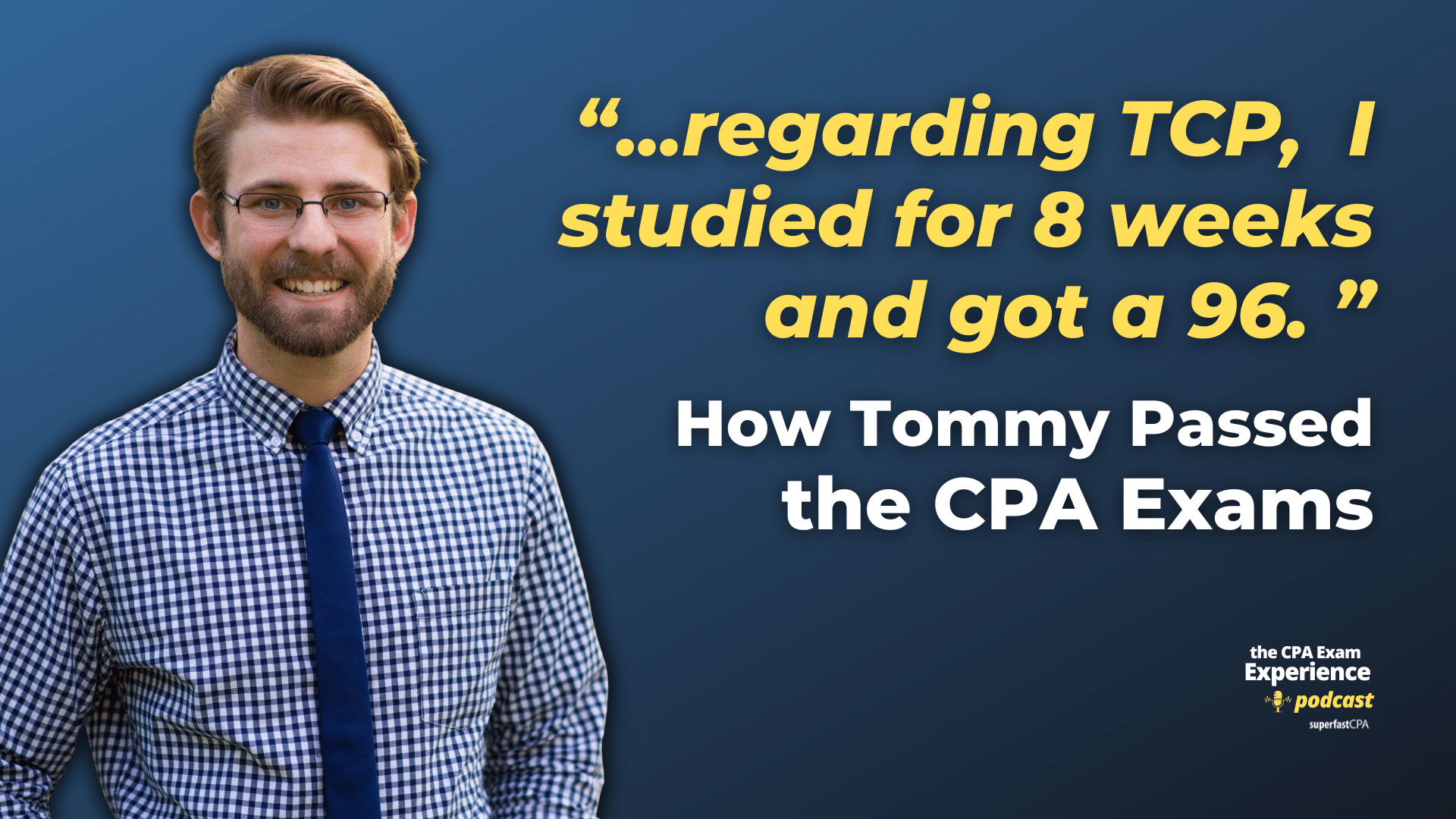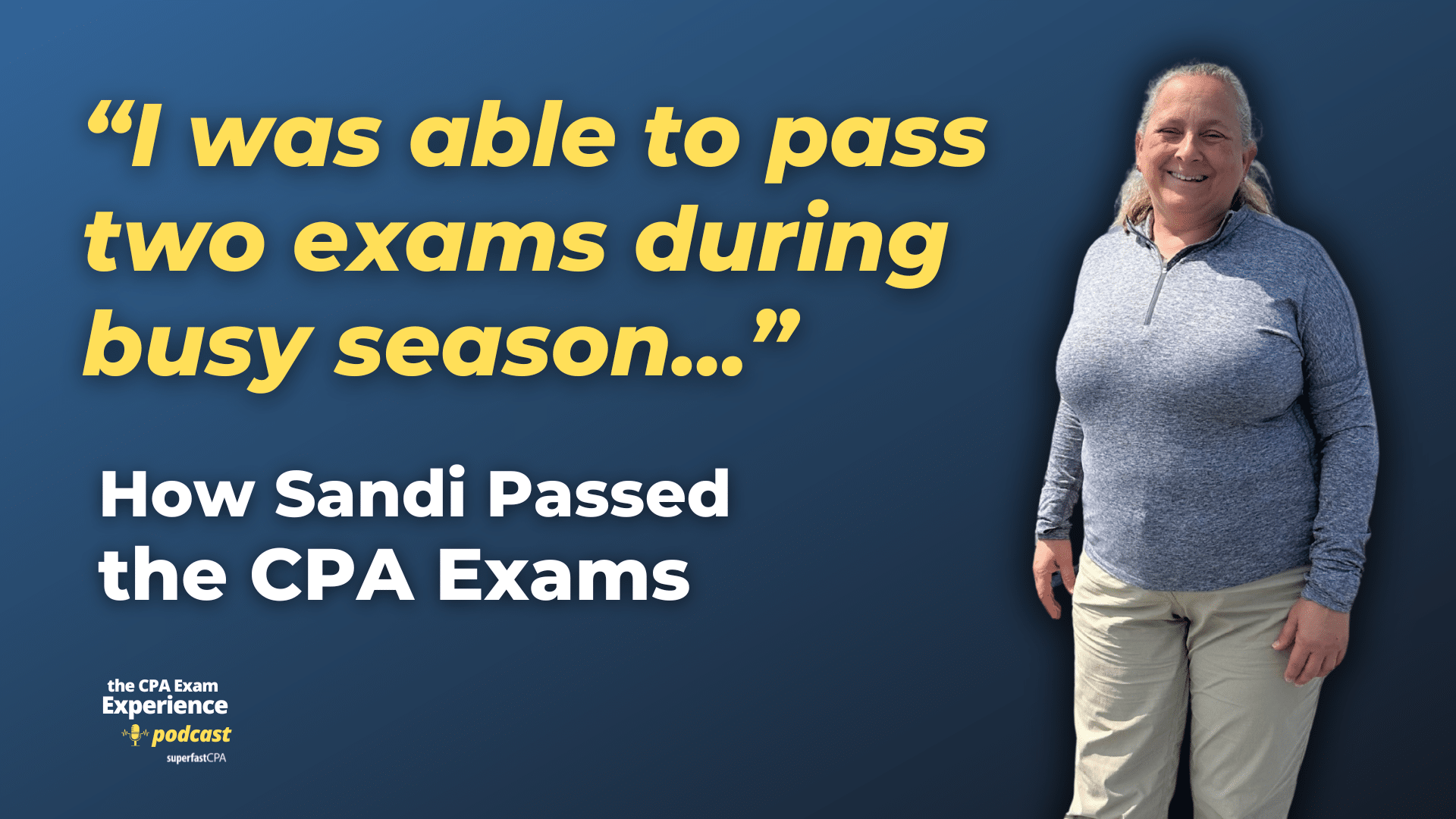In this video, we walk through 7 BAR practice questions teaching about variance analysis. These questions are from BAR content area 1 on the AICPA CPA exam blueprints: Business Analysis
The best way to use this video is to pause each time we get to a new question in the video, and then make your own attempt at the question before watching us go through it.
Also be sure to watch one of our free webinars on the 6 “key ingredients” to an extremely effective & efficient CPA study process here…
Variance Analysis
One of the most critical aspects of managerial accounting is the ability to compare current financial performance to expectations—whether those expectations come from a prior period or a carefully prepared budget. This practice, known as variance analysis, helps decision-makers understand where and why actual results differ, so they can take corrective action and make informed business decisions.
Below is a formal overview of the key variance types, along with the standard formulas and illustrative examples.
Direct Material Variances
Direct material variances analyze the differences in cost and usage of raw materials.
- Material Price Variance Formula: (Actual Price – Standard Price) × Actual Quantity Purchased
This variance reflects whether materials were acquired at a cost higher or lower than anticipated.
Example:
If the standard cost is $3.00 per pound and the actual cost is $2.80 for 5,000 pounds, then:
($2.80 – $3.00) × 5,000 = –$1,000 Favorable
- Material Usage (Efficiency) Variance Formula: (Actual Quantity Used – Standard Quantity Allowed) × Standard Price
This measures how efficiently materials were used in production.
Example:
If 6,200 pounds were used when 6,000 were expected, and the standard price is $3.00:
(6,200 – 6,000) × $3.00 = $600 Unfavorable
Direct Labor Variances
Direct labor variances evaluate both wage differences and workforce efficiency.
- Labor Rate Variance Formula: (Actual Hourly Rate – Standard Hourly Rate) × Actual Hours Worked
Example:
If the actual rate is $21/hour and the standard is $20/hour for 1,000 hours:
($21 – $20) × 1,000 = $1,000 Unfavorable
- Labor Efficiency Variance Formula: (Actual Hours – Standard Hours Allowed) × Standard Rate
Example:
If the job should take 900 hours but required 1,000 hours at $20/hour:
(1,000 – 900) × $20 = $2,000 Unfavorable
Variable Overhead Variances
These variances examine how well variable overhead costs (e.g., utilities, indirect supplies) are controlled.
- Variable Overhead Spending Variance Formula: (Actual Variable Rate – Standard Rate) × Actual Hours Worked
- Variable Overhead Efficiency Variance Formula: (Actual Hours – Standard Hours Allowed) × Standard Variable Overhead Rate
Example:
Standard rate = $6/hour
Actual rate = $6.25/hour for 5,000 hours
Standard hours allowed = 4,800
Spending Variance: ($6.25 – $6.00) × 5,000 = $1,250 Unfavorable
Efficiency Variance: (5,000 – 4,800) × $6 = $1,200 Unfavorable
Fixed Overhead Variances
Fixed overhead variances assess whether fixed costs were within expected limits and whether production volume met expectations.
- Fixed Overhead Spending Variance Formula: Actual Fixed Overhead – Budgeted Fixed Overhead
- Fixed Overhead Volume Variance Formula: (Actual Units – Budgeted Units) × Standard Fixed Overhead Rate
Example:
Budgeted production = 10,000 units
Actual production = 9,000 units
Standard fixed overhead rate = $4/unit
Volume Variance: (9,000 – 10,000) × $4 = –$4,000 Unfavorable
Selling Price and Sales Volume Variances
These variances help explain changes in revenue due to pricing or sales activity.
- Selling Price Variance Formula: (Actual Selling Price – Budgeted Price) × Actual Units Sold
- Sales Volume Variance Formula: (Actual Units Sold – Budgeted Units) × Standard Contribution Margin per Unit
Example:
Budget: 8,000 units at $20
Actual: 7,500 units at $22
Contribution margin = $10
Selling Price Variance: ($22 – $20) × 7,500 = $15,000 Favorable
Volume Variance: (7,500 – 8,000) × $10 = –$5,000 Unfavorable
Flexible Budget Variances
Flexible budgets adjust budgeted expectations based on actual output, helping to isolate efficiency in cost management.
- Flexible Budget Variance Formula: Actual Costs – Flexible Budget (based on actual volume)
Example:
Actual production = 6,000 units
Standard variable cost = $12/unit
Flexible budget = 6,000 × $12 = $72,000
Actual variable cost = $75,000
Variance = $75,000 – $72,000 = $3,000 Unfavorable
Overapplied and Underapplied Overhead
Manufacturing overhead is often applied using predetermined rates. The difference between what is applied and what is actually incurred must be reconciled.
- Applied Overhead = Predetermined Overhead Rate × Actual Activity Base
- Over/Underapplied Overhead = Applied Overhead – Actual Overhead Incurred
Example:
Predetermined rate = $10/hour
Actual hours = 10,000
Applied Overhead = $100,000
Actual Overhead = $97,000
Overapplied Overhead = $3,000 Favorable
Conclusion
Variance analysis is a powerful tool that connects financial results with operational performance. By dissecting cost and revenue differences into measurable components, managers can identify where expectations were exceeded, where improvements are needed, and what factors are driving profitability or loss.









